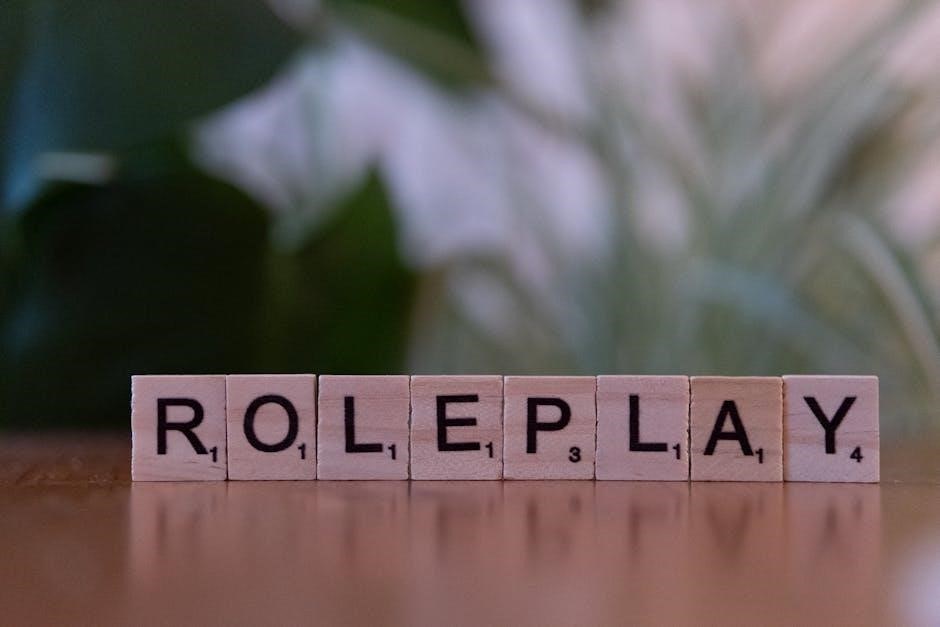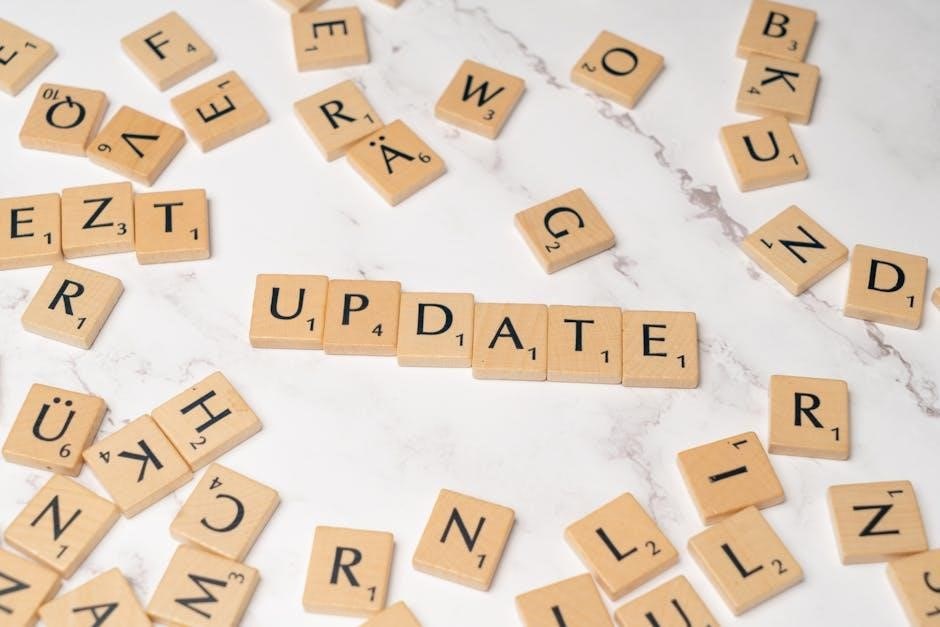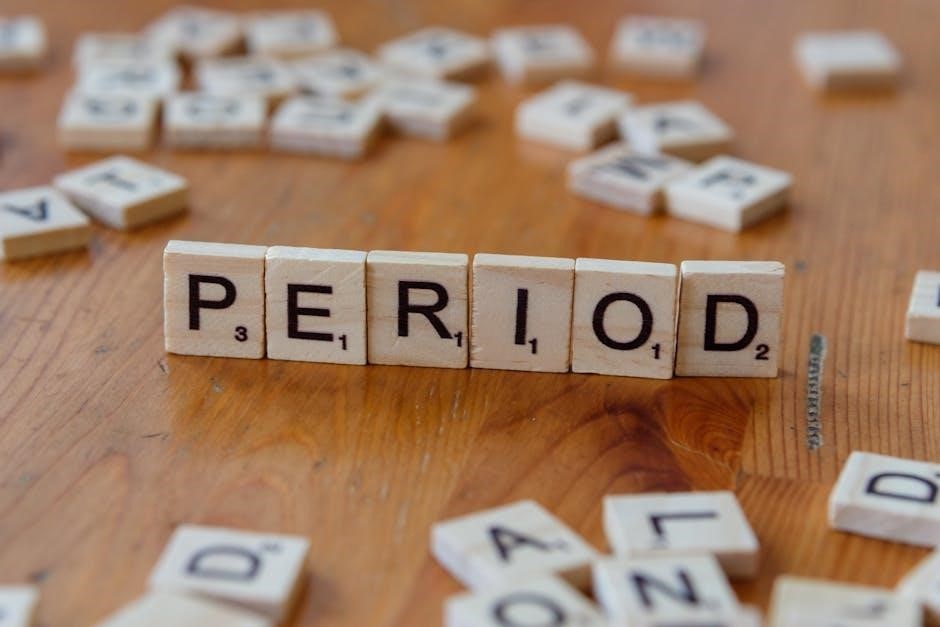Gestalt Language Processing (GLP) is an approach emphasizing whole language units over fragmented parts. It begins with memorized phrases, progressing to single words and complex communication, aiding echolalia transition. This method, detailed in resources like the Gestalt Language Handbook, offers a natural acquisition pathway, contrasting traditional analytic approaches.
1.1 Definition and Overview of GLP
Gestalt Language Processing (GLP) is a language acquisition model focusing on the use of whole, memorized phrases as foundational units. It contrasts with analytic approaches by prioritizing holistic language processing, where learners initially acquire “gestalts” or chunks of language. These gestalts are gradually broken down into smaller components, allowing for the development of meaningful communication. GLP emphasizes the role of context and shared understanding, often beginning with echolalia before progressing to more independent language use. This approach aligns with natural language acquisition patterns, making it a valuable framework for supporting individuals with diverse communication needs.
1.2 Historical Background and Development of GLP
Gestalt Language Processing (GLP) emerged as a response to traditional analytic approaches, emphasizing holistic language acquisition. Rooted in Gestalt psychology, it focuses on processing whole language units rather than isolated components. The model gained traction through research on echolalia and natural language development, particularly in individuals with neurodiverse communication profiles. Over time, GLP evolved to include structured stages, from immediate echolalia to expanded gestalt language use. This framework was refined by speech-language pathologists and researchers, offering a practical approach to supporting learners in progressing toward independent communication. Its development highlights the importance of context and shared meaning in language acquisition.
1.3 Importance of GLP in Language Acquisition
Gestalt Language Processing (GLP) is vital for learners who acquire language through whole units rather than isolated parts. It reduces frustration by leveraging memorized phrases and shared context, fostering confidence and communication skills. GLP’s holistic approach aligns with natural language development, making it particularly effective for neurodiverse individuals. By focusing on meaningful chunks of language, GLP supports learners in gradually breaking down and understanding language components. This method not only enhances expressive abilities but also promotes comprehension, making it a valuable framework for speech-language pathologists and educators supporting diverse learners.

Key Concepts and Principles of GLP
Gestalt Language Processing emphasizes holistic learning, starting with memorized phrases, progressing to single words, and utilizing context and echolalia to facilitate natural language development and comprehension.
2.1 Gestalt vs. Analytic Language Processing
Gestalt Language Processing (GLP) focuses on learning whole phrases and sentences, breaking them into parts later, while analytic processing starts with individual components. GLP emphasizes memorization and context, enabling natural communication through echolalia and shared meaning. In contrast, analytic approaches prioritize grammar and syntax, often leading to more structured, rule-based language use. GLP is holistic, mimicking natural acquisition, whereas analytic methods are systematic and fragmented, highlighting fundamental differences in how language is processed and acquired.
2.2 The Role of Memorization in GLP
Memorization is central to Gestalt Language Processing, where learners acquire whole phrases or sentences before breaking them into parts. This approach mirrors natural language acquisition, allowing for effective communication through familiar phrases. Memorization builds fluency and confidence, enabling learners to progress from echolalia to independent language use. It provides a foundation for understanding context and meaning, fostering a holistic learning experience that emphasizes practical communication over rule-based structures. This method is particularly effective in early stages, where phrases serve as the starting point for language development.
2.3 The Significance of Context in GLP
Context plays a pivotal role in Gestalt Language Processing, as it enables learners to interpret and use memorized phrases effectively. Shared context ensures that communication is meaningful, even when language is literal. For instance, learners relying on echolalia may communicate successfully if their partners understand the situational relevance. Context guides the appropriate use of phrases, fostering progression from rote memorization to flexible language use. It also helps bridge gaps in understanding, allowing learners to move beyond literal interpretations and develop more nuanced communication skills. This emphasis on context aligns with natural language acquisition, where meaning is derived from shared experiences and environments.

Stages of Gestalt Language Processing
Gestalt Language Processing progresses through six stages, from echolalia to integrated processing. It begins with memorized phrases and evolves into flexible, original communication, guided by context.
3.1 Stage 1: Immediate and Delayed Echolalia
Stage 1 of Gestalt Language Processing involves immediate and delayed echolalia, where learners repeat phrases without understanding. Immediate echolalia occurs right after hearing, while delayed echolalia is repeated later. Both types are crucial as they form the foundation for language development, allowing learners to gradually internalize phrases and contexts. This stage is characterized by reliance on memorized language units, with minimal breakdown or analysis. It serves as the starting point for progressing through subsequent stages, where learners begin to mitigate and adapt their language use. Understanding this stage is essential for supporting learners effectively in their language journey.
3.2 Stage 2: Mitigated Echolalia
Stage 2 of Gestalt Language Processing introduces mitigated echolalia, where learners begin to alter memorized phrases to fit specific contexts or meanings. This stage marks a shift from rote repetition to initial attempts at adapting language. Learners may modify phrases slightly, showing an emerging understanding of language flexibility. Mitigated echolalia is a critical transition phase, as it indicates the start of breaking down gestalts into smaller, adaptable units. It bridges the gap between echolalia and more independent language use, setting the stage for further development in subsequent stages. This progression is vital for advancing communication skills in GLP learners.
3.3 Stage 3: Gestalt Language Processing
Stage 3 marks the core of Gestalt Language Processing, where learners primarily use whole, memorized phrases or gestures to communicate. At this stage, they begin to understand the relationship between language and meaning, starting to break down gestalts into smaller, adaptable units. Learners may mix parts of different phrases to create new expressions, showing an emerging grasp of language structure. This stage is foundational, as it transitions learners from echolalia to more independent, flexible communication. The focus remains on natural acquisition, with an emphasis on context and shared meaning to guide language development. This phase is critical for building a robust linguistic foundation.
3.4 Stage 4: Expanded Gestalt Language
Stage 4 is characterized by the expansion of gestalt language use, where learners begin to combine memorized phrases or modify them to fit new contexts. At this point, communication becomes more flexible, with learners showing an increased ability to adapt language to express different meanings. The reliance on echolalia decreases as they start to use language more spontaneously and appropriately. This stage reflects a deeper understanding of how language functions in real-world interactions, with learners leveraging shared context to enhance their expressions. The focus remains on natural acquisition, with an emphasis on expanding vocabulary and communication complexity.
3.5 Stage 5: Analytic Language Processing
Stage 5 marks the transition to analytic language processing, where learners break down memorized phrases into smaller components, such as words and grammatical structures. At this stage, learners demonstrate an improved understanding of language rules and syntax, enabling them to create novel sentences. The reliance on gestalt language decreases as analytic processing becomes more dominant. This stage is crucial for developing flexible and spontaneous communication skills, as learners can now manipulate language elements to express a wide range of thoughts and ideas. The focus shifts from memorization to active construction of meaningful utterances, reflecting advanced language development.
3.6 Stage 6: Integration of Gestalt and Analytic Processing
Stage 6 represents the pinnacle of language development in GLP, where learners seamlessly integrate gestalt and analytic processing. This stage is characterized by the effortless combination of whole-language understanding and rule-based, detailed communication. Learners can fluidly alternate between using memorized phrases and constructing novel sentences, optimizing their communication strategy based on context. This integration enhances flexibility, efficiency, and overall language proficiency. It signifies mastery, as learners can choose the most effective approach for any situation, leading to advanced and nuanced communication abilities. This stage is a dynamic process, allowing learners to adapt their language use seamlessly, reflecting their comprehensive grasp of both gestalt and analytic methods.

Theoretical Framework of GLP
Gestalt Language Processing is rooted in cognitive and linguistic principles, emphasizing memory, imitation, and contextual learning. It integrates neurocognitive research to explain language acquisition patterns and development.
4.1 Cognitive and Linguistic Foundations
Gestalt Language Processing (GLP) is grounded in cognitive and linguistic theories that emphasize whole-language learning. Learners acquire language as chunks or phrases, relying on memory and context rather than breaking down sentences analytically. This approach aligns with how the brain processes patterns and meaningful units, fostering natural language acquisition. Linguistically, GLP prioritizes meaningful communication over grammatical precision, allowing learners to progress from echolalia to independent speech. The framework highlights the interplay between cognitive development and linguistic skills, providing a holistic view of language learning that mirrors real-world communication patterns.
4.2 The Role of Memory and Imitation
Memory and imitation are central to Gestalt Language Processing (GLP), as learners begin by memorizing whole phrases or chunks of language. Imitation plays a critical role, enabling learners to replicate meaningful units they hear. This process mimics natural language acquisition, where children often echo phrases before understanding their components. In GLP, memorization provides a foundation for communication, reducing frustration and building confidence. Over time, learners may gradually break down these chunks into smaller, more flexible language units, transitioning from echolalia to independent speech. Memory and imitation thus serve as essential tools for language development in the GLP framework.
4.3 Neurocognitive Basis of GLP
The neurocognitive basis of Gestalt Language Processing (GLP) involves brain regions associated with memory, auditory processing, and language. Learners initially process language as whole units, relying on the hippocampus and temporal lobe for memorization. As they progress, the brain begins to analyze these chunks, engaging areas like Broca’s and Wernicke’s regions. The transition from echolalia to independent speech reflects heightened neural activity in these areas, enabling the integration of gestalt and analytic processing. This approach aligns with how the brain naturally processes language, emphasizing holistic learning before detailed analysis, making GLP a neurologically grounded method for language acquisition and development.

Practical Applications of GLP
GLP offers practical strategies for speech-language pathologists and educators, supporting learners through memorized phrases and context-rich environments. It aids in building confidence and communication skills effectively.
5.1 Supporting Gestalt Language Learners
Supporting gestalt language learners involves leveraging their strength in memorizing whole phrases. SLPs can use shared contexts and meaningful interactions to facilitate communication. Encouraging the use of memorized language while gradually introducing mitigation strategies helps learners transition to more independent communication. Providing visual aids, consistent routines, and emotional support also fosters a positive learning environment. Professionals should focus on building confidence by celebrating small successes, which reduces frustration and motivates learners to engage further. Resources like the Gestalt Language Handbook offer practical guidance for tailoring interventions to individual needs, ensuring effective and personalized support.

5.2 Strategies for Speech-Language Pathologists (SLPs)
Speech-Language Pathologists (SLPs) play a crucial role in supporting gestalt language learners. Effective strategies include using shared contexts to facilitate communication, leveraging memorized phrases, and gradually introducing mitigation techniques. SLPs should incorporate visual aids and structured routines to enhance learning. The Gestalt Language Handbook provides valuable guidance for designing interventions tailored to individual needs. Encouraging natural language acquisition and reducing frustration are key objectives. By focusing on meaningful interactions and celebrating progress, SLPs can help learners transition from echolalia to more independent communication, ensuring a supportive and effective language development process.
5.3 Building Confidence in Learners
Building confidence in gestalt language learners is essential for fostering communication skills. Understanding and supporting their language development reduces frustration, creating a positive environment for growth. SLPs and caregivers should validate learners’ language, emphasizing meaningful interactions and shared contexts. Celebrating small progress, such as mitigated echolalia, encourages learners to engage more freely. Providing opportunities for self-expression and creating a supportive space where mistakes are viewed as learning opportunities can significantly boost confidence. This approach helps learners transition from reliance on memorized phrases to more independent communication, fostering a sense of accomplishment and willingness to participate actively in conversations.
5.4 IEP Goals for GLP Stage 1 Learners
IEP goals for GLP Stage 1 learners focus on reducing immediate and delayed echolalia while fostering spontaneous communication. Goals may include increasing the use of mitigated echolalia in structured activities and improving initiation of interactions. Objectives should emphasize understanding and expanding memorized phrases, with measurable targets like reducing echolalia by a specific percentage over a set period. Incorporating positive reinforcement and naturalistic teaching strategies can support progress. Collaboration between SLPs and caregivers is crucial to ensure consistent implementation of these goals, aiding learners in advancing toward more independent communication skills.

Case Studies and Real-World Examples
Case studies highlight successful GLP implementations, showcasing learners’ progress from echolalia to spontaneous communication. Real-world examples demonstrate how structured therapy and naturalistic teaching strategies foster meaningful language development.
6.1 Successful Implementation of GLP in Therapy
Therapists have successfully applied GLP to help learners progress from echolalia to spontaneous communication. By using memorized phrases and contextual cues, SLPs guide learners to break down gestalts into meaningful words. Structured therapy sessions, combined with naturalistic teaching, foster language development. For example, a learner in Stage 1 began using immediate echolalia but gradually developed mitigated forms through consistent practice. Such cases demonstrate how GLP, supported by resources like the Gestalt Language Handbook, can lead to significant improvements in communication skills and confidence for individuals with language challenges.
6.2 Overcoming Challenges in GLP
Implementing GLP can present challenges, such as managing frustration in learners and ensuring proper contextual understanding. Professionals must balance structured therapy with naturalistic teaching to avoid rigid reliance on memorized phrases. Additionally, transitioning from echolalia to spontaneous communication requires patience and consistent practice. Strategies like visual aids and gradual breakdown of gestalts can help learners navigate these hurdles. Addressing these challenges effectively ensures smoother progression through GLP stages, fostering confidence and communication skills in individuals with language difficulties.
6.3 Longitudinal Studies of GLP Learners
Longitudinal studies of GLP learners reveal insights into their progression through the six stages of language development. These studies highlight the importance of consistent support and tailored interventions, emphasizing how learners transition from echolalia to spontaneous communication. Initial reliance on memorized phrases gradually shifts to context-driven understanding and original utterances. Research underscores the role of SLPs in guiding this journey, demonstrating positive outcomes in communication confidence and linguistic complexity over time. These studies provide valuable data for refining GLP strategies and ensuring optimal support for learners at all stages.

Resources and Tools for GLP
The Gestalt Language Handbook, available as a free PDF, offers comprehensive guidance. Additional tools include recommended reading, online forums, and downloadable resources to support GLP learning and application.
7;1 The Gestalt Language Handbook
The Gestalt Language Handbook is a comprehensive guide available as a free PDF, providing detailed insights into Gestalt Language Processing. It aids professionals and caregivers in understanding and applying GLP principles, offering practical strategies for supporting learners. The handbook covers foundational concepts, theoretical frameworks, and real-world applications, making it an invaluable resource for speech-language pathologists, educators, and parents. It includes examples of communication strategies, IEP goal development, and techniques to foster language development. This accessible resource is widely used to support individuals at various GLP stages, ensuring effective and tailored language acquisition support. Its availability as a free download makes it accessible to all stakeholders.
7.2 Recommended Reading and References
For deeper understanding, essential readings include Natural Language Acquisition and The Six Stages of GLP. These texts provide foundational knowledge on gestalt principles and their application. Additional resources like Supporting Gestalt Learners and Language Development Insights offer practical strategies. Academic journals such as Language Acquisition Research and Cognitive Linguistics Review explore theoretical underpinnings. Online forums and communities also share real-world examples and case studies, enriching the learning experience. These references collectively offer a holistic view of GLP, aiding professionals and caregivers in effective language development support.
7.3 Online Communities and Forums
Online communities and forums dedicated to Gestalt Language Processing (GLP) provide valuable resources and support for learners and professionals. Platforms like Pro-Loquela and SLPs Supporting GLP offer insights, strategies, and shared experiences. These spaces foster collaboration, enabling individuals to discuss challenges and successes. Additionally, forums like Gestalt Language Learners share practical tools and research updates. Engaging with these communities enhances understanding and application of GLP principles, ensuring effective language development support.

Gestalt Language Processing and Technology
Technology enhances GLP through apps like Pro-Loquela, offering interactive exercises and personalized learning. AI tools provide real-time feedback, aiding language development and memorization of gestalt phrases effectively.
8.1 Digital Tools for GLP Learners
Digital tools like Pro-Loquela and Speech Therapy apps provide interactive exercises tailored for GLP learners. These platforms offer memorization aids, phrase mitigation drills, and context-based activities. Features include audio-visual prompts, real-time feedback, and progress tracking. Apps such as GestureTools and LanguageLeap support gestalt-to-analytic transitions. AI-powered chatbots simulate conversations, fostering natural language use. Such tools are accessible on multiple devices, ensuring consistent practice. They complement traditional therapy methods, making language development engaging and effective for learners at all GLP stages.
8.2 Apps and Software for Language Development
Apps like Pro-Loquela and Speech Therapy Pro offer tailored exercises for GLP learners, focusing on memorization and phrase mitigation. These tools provide audio-visual prompts, real-time feedback, and progress tracking. Software such as LanguageBuilder and FluencyTutor support gestalt-to-analytic transitions with interactive activities. AI-powered chatbots simulate conversations, aiding natural language use. Many apps include features like shared context exercises and echolalia mitigation drills. They are accessible on multiple devices, ensuring consistent practice. These tools complement traditional therapy methods, making language development engaging and effective for learners at all GLP stages.
8.3 The Role of AI in GLP
AI plays a transformative role in Gestalt Language Processing by offering personalized learning experiences tailored to individual needs. Interactive tools, like AI-driven chatbots, simulate real conversations, aiding learners in practicing communication skills dynamically. Speech recognition technology provides immediate feedback on pronunciation, enhancing speech accuracy. AI also tracks progress, offering valuable insights for educators and parents. Its accessibility across devices ensures flexible learning opportunities. Additionally, AI can structure exercises to help transition from echolalia to spontaneous communication, providing continuous support and adapting to each learner’s pace. This fosters a more engaging and effective language development process overall.

Challenges and Controversies in GLP
GLP faces criticism for its focus on memorization and echolalia, with some arguing it may hinder spontaneous communication development. Controversies include debates about its effectiveness compared to traditional methods.
9.1 Criticisms of the Gestalt Approach
Critics argue that GLP’s reliance on memorized phrases may hinder spontaneous communication and creative language use. Some suggest it delays the development of generative language skills, as learners focus on reproducing chunks rather than understanding grammar and syntax. Additionally, the approach is criticized for potentially limiting the development of self-generated sentences in favor of echolalia. Critics also question its suitability for learners who require structured, rule-based language instruction. Despite these concerns, proponents emphasize GLP’s alignment with natural language acquisition patterns, particularly for those who thrive on holistic learning. The debate highlights the need for balanced approaches in language development strategies.
9.2 Addressing Misconceptions About GLP
Common misconceptions about GLP include the belief that it neglects grammar or hinders creativity. In reality, GLP builds a foundation for generative language by starting with whole phrases. It is not limited to learners with autism but supports diverse language acquisition needs. While echolalia is a natural stage, GLP aims to expand communication beyond repetition. Critics often misunderstand its focus on holistic learning, which mirrors natural language development patterns. Addressing these misconceptions involves clarifying GLP’s structured progression toward independent language use, emphasizing its adaptability for various learners, and highlighting its alignment with natural acquisition processes.
9.3 Comparing GLP to Other Language Acquisition Models
Gestalt Language Processing (GLP) differs from traditional analytic models by prioritizing whole language units over fragmented parts. Unlike analytic approaches, which focus on breaking language into components, GLP begins with memorized phrases, fostering natural progression. It contrasts with models like Natural Language Acquisition (NLA), which emphasizes spontaneous, unstructured learning. While GLP shares some principles with NLA, its structured stages provide clearer guidance for learners and practitioners. This holistic approach aligns with how many neurodiverse individuals naturally process language, offering a pathway from echolalia to independent communication. GLP’s emphasis on memorization and context distinguishes it from purely rule-based systems.
Gestalt Language Processing offers a structured approach, starting with whole phrases to aid progression from echolalia to independent communication. Its effectiveness for neurodiverse learners is notable, with future potential in technology integration and expanded educational applications.
10.1 Summary of Key Points
Gestalt Language Processing (GLP) emphasizes whole language acquisition, starting with memorized phrases and progressing through stages to independent communication. It contrasts with analytic approaches by focusing on context and memorization. The six-stage model, from echolalia to integrated processing, supports neurodiverse learners. Resources like the Gestalt Language Handbook guide professionals in implementing GLP strategies. Future directions include integrating technology and expanding applications in education and therapy, ensuring more learners benefit from this structured, natural acquisition method.
10.2 Emerging Trends in GLP Research
Emerging trends in GLP research focus on integrating technology, such as AI-driven tools, to enhance language development. Studies explore expanded applications of GLP for neurodiverse learners, emphasizing personalized approaches. Longitudinal studies highlight long-term effectiveness, while interdisciplinary collaboration strengthens its implementation. Researchers are also investigating cultural adaptations to broaden accessibility. These advancements aim to refine GLP’s stages, from echolalia to analytic integration, ensuring it remains a leading approach in language acquisition and therapy.
10.3 The Future of Gestalt Language Processing
The future of GLP lies in advancing its integration with technology and expanding its accessibility. Research will likely focus on refining its stages, enhancing AI-driven tools, and broadening its application to diverse populations. As more professionals adopt GLP, its evidence-based practices will continue to evolve, offering personalized solutions for learners. The growing emphasis on neurodiverse support and global accessibility will further cement GLP’s role in language development. By fostering collaboration between researchers and practitioners, GLP is poised to remain a cornerstone in language acquisition and therapy, empowering learners worldwide with innovative and inclusive approaches.

Leave a Reply